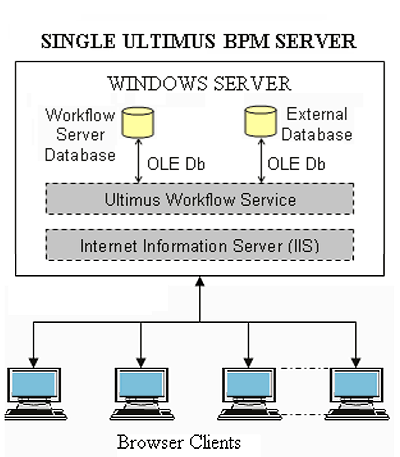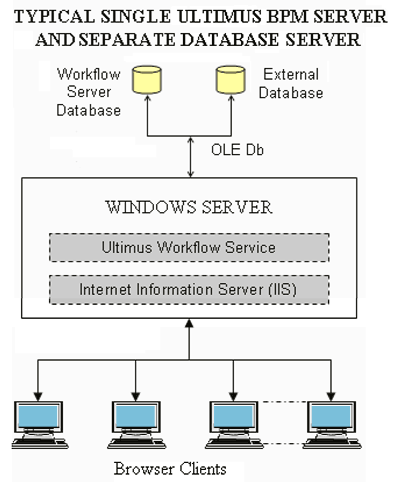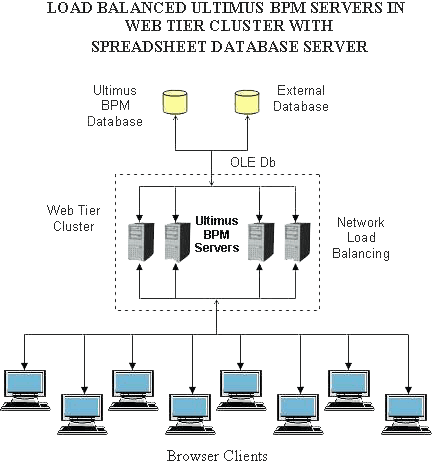Ultimus BPM Server
The Ultimus BPM Server is a powerful process execution engine that monitors and controls business processes.
It is responsible for the orchestration of events within and across multiple business processes, and also manages integration with existing enterprise systems for manipulation of process-related data. Human interaction with the BPM Server is supported through a robust client interface, which is leveraged by the Ultimus Client modules, and back-end integration is supported through open technologies such as XML, Web Services and the Ultimus Flobots.
The BPM Server consists of scalable components based on the Microsoft .NET architecture and enterprise databases to provide transactional integrity, security, scalability, redundancy and dynamic load distribution. Ultimus also supports component load balancing, fail-over redundancy and network load balancing for enterprise-level scalability.
Key Features:
- Process Orchestration and Execution
- Integration with existing systems
- Process Transactional integrity
- Scalability (>1 billion/TPD)
- Multi-threaded
- Comprehensive API support
Enterprise Scalability through Clustering
Ultimus is designed to be scalable and uses the best technologies available for delivering solutions to fit every organizational requirement. The scalability and redundancy of the Ultimus BPM Server is demonstrated by the following block diagrams:
For growing organizations, the Ultimus BPM Server can run on a single Windows Server that also hosts the database. This simplifies and reduces the cost of the implementation. The system can easily migrate to a multi-server architecture as needed:

You can have one Windows Server dedicated to business process execution and another server dedicated to databases. The database must be an Oracle or SQL Server database running on any platform. This architecture will support higher loads and allow you to use an existing database used for other applications. In this architecture, the database scales independently from the BPM Server. Ultimus can continue to scale by moving modules to separate servers and implementing a multi-server load balanced architecture:

For enterprise implementations, multiple Ultimus BPM Servers can be set up in parallel for Network Load Balancing. In this configuration, requests would be load-balanced across Ultimus servers for improved scalability. If more servers are required, they can just be added to the server farm. This architecture allows for fail-over redundancy of Ultimus BPM Servers:

In addition to these configurations, Ultimus also supports Microsoft Application Center. Using Application Center, Ultimus supports clustering of up to 64 servers using a component tier for Component Load Balancing and Web Tier for Network Load Balancing. This architecture features fail-over redundancy. Adding servers to relieve specific bottlenecks can enhance performance and reliability. If the issue is access, additional Web tier servers can be added, if it is load, just add more component tier servers. Flobots can be moved to separate servers and the database can scale independently.
If you would like to talk about how you can use Ultimus to improve your business processes then please contact us.